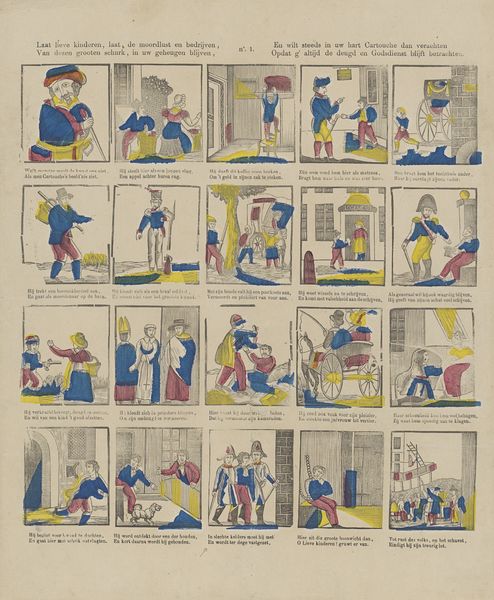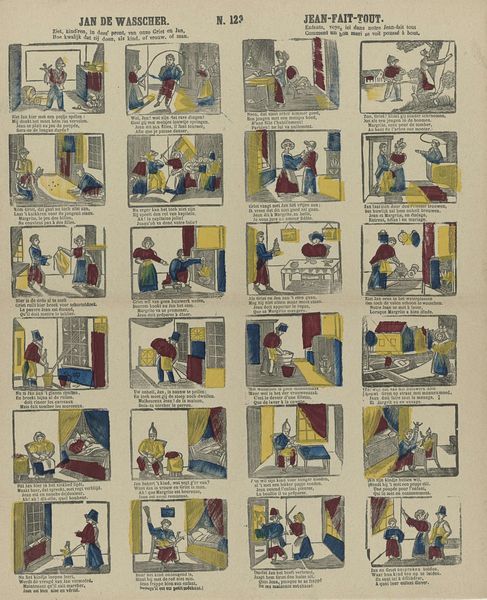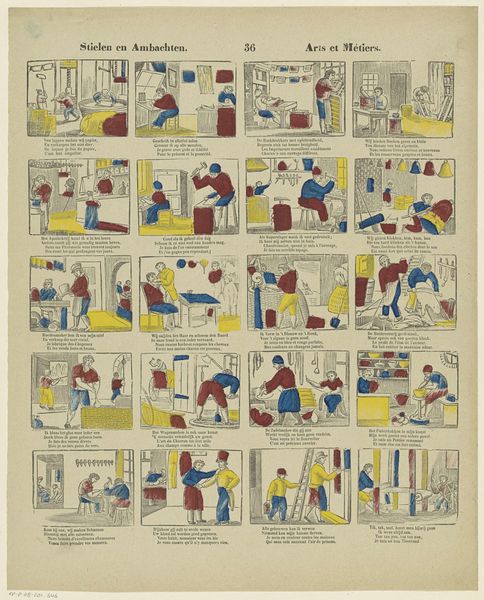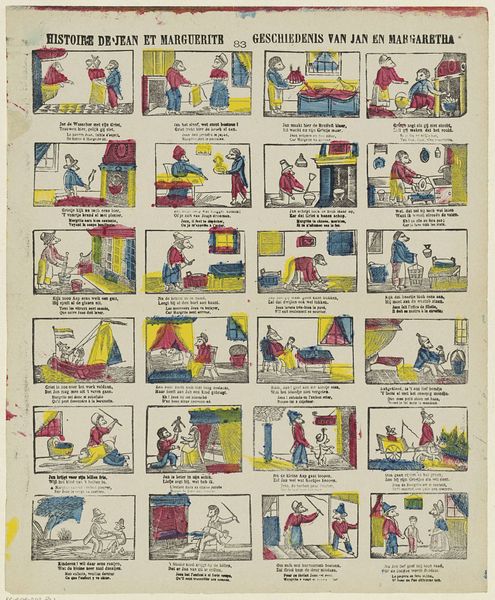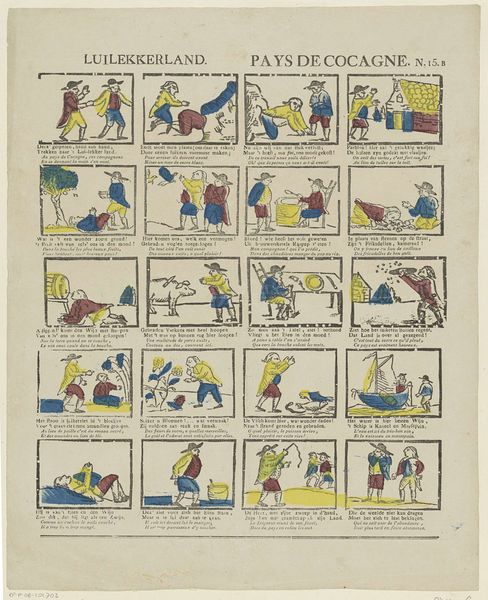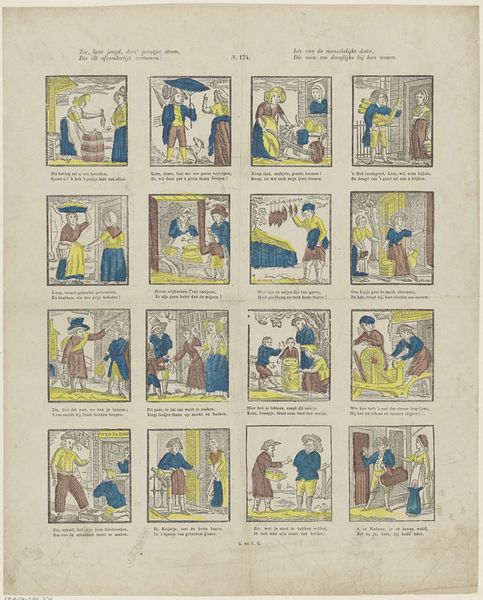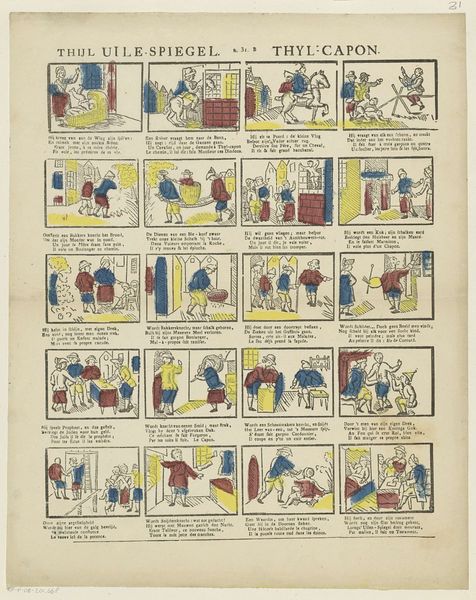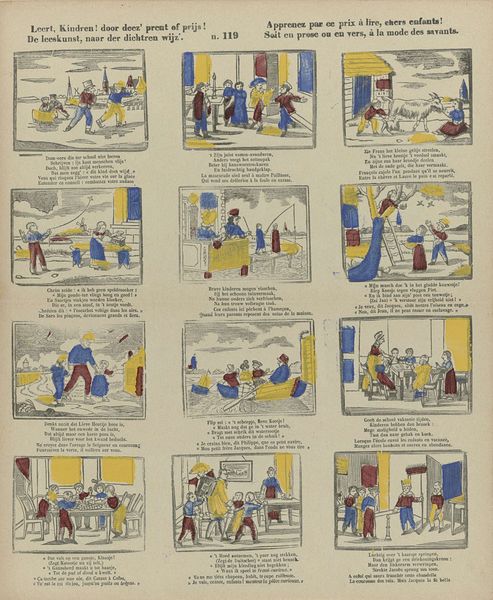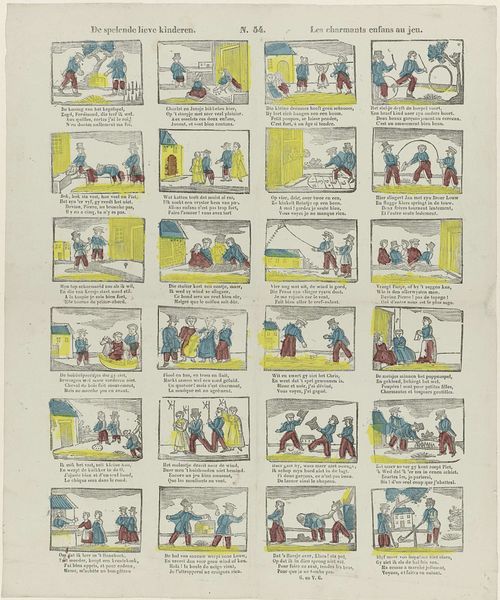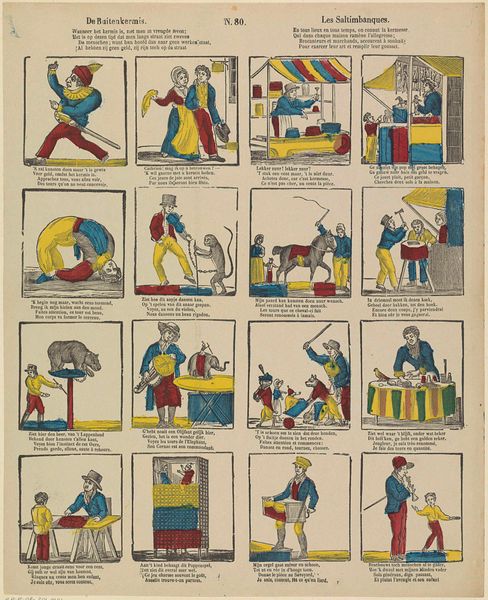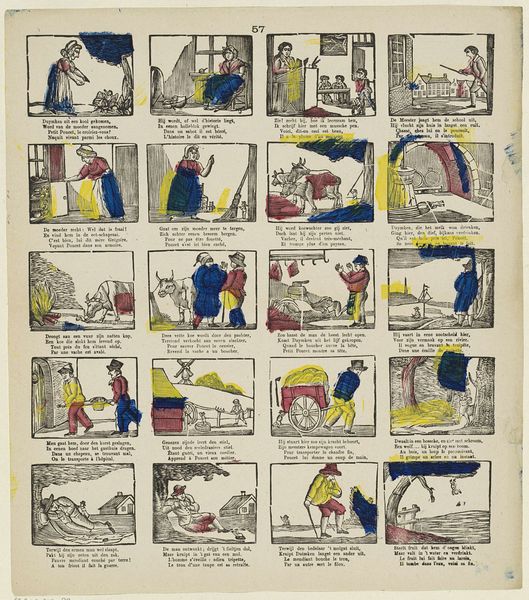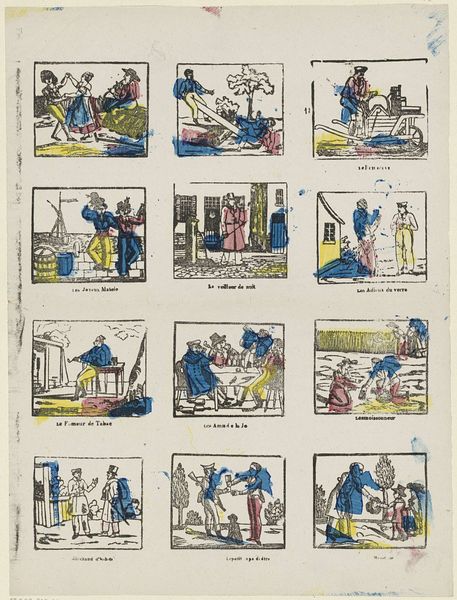
Laat lieve kinderen, laat, de moordlust en bedrijven, / Van dezen grooten schurk, in uw geheugen blijven, / En wilt steeds in uw hart Cartouche dan verachten / Opdat g' altijd de deugd en godsdienst blijt betrachten 1848 - 1881
0:00
0:00
#
narrative-art
# print
#
caricature
#
folk-art
#
comic
#
genre-painting
#
cartoon carciture
Dimensions: height 383 mm, width 313 mm
Copyright: Rijks Museum: Open Domain
Editor: This hand-colored print, dating from 1848 to 1881, by Lutkie & Cranenburg, titled "Laat lieve kinderen..." presents as a kind of comic strip with cautionary verses. There’s a somewhat childish feel to the rendering, which seems apt given the inscription is aimed at children, warning about a “great rogue.” What can you tell me about the symbols in this artwork? Curator: Indeed, this folk-art print operates powerfully through familiar visual and textual symbols. Let’s look at the rogue “Cartouche,” depicted in a series of episodic images. Each frame presents a recognizable symbol of disobedience and moral failing, such as stealing or consorting with disreputable characters. The bright colors, crude as they might appear, serve to highlight the visual transgression. Editor: So the very simplicity of the image serves to create an immediate, accessible, connection for children? Curator: Exactly. The composition relies on established archetypes – the thief, the cheat – immediately recognizable. Coupled with the cautionary verse, this reinforces the moral message. What kind of enduring cultural narratives do you think this recalls? Editor: Well, the reference to upholding “virtue and religion” combined with depictions of wrongdoing suggests the struggle between good and evil, an eternal theme in fables and folklore. The format also puts me in mind of medieval morality plays. Curator: Precisely. Think of how such easily grasped symbolic forms persist in the collective consciousness, reinforcing values over time. The caricature exaggerates immoral action into visual symbols that can be widely digested and internalized, culturally forming the young audience. Editor: I hadn't considered it so deeply, but that’s very interesting: seeing the cartoon not as something disposable, but as part of ongoing tradition and even cultural memory. Curator: We can observe this easily today, looking at symbols that trigger reactions, reflecting cultural memory and values that echo long through the years.
Comments
No comments
Be the first to comment and join the conversation on the ultimate creative platform.
